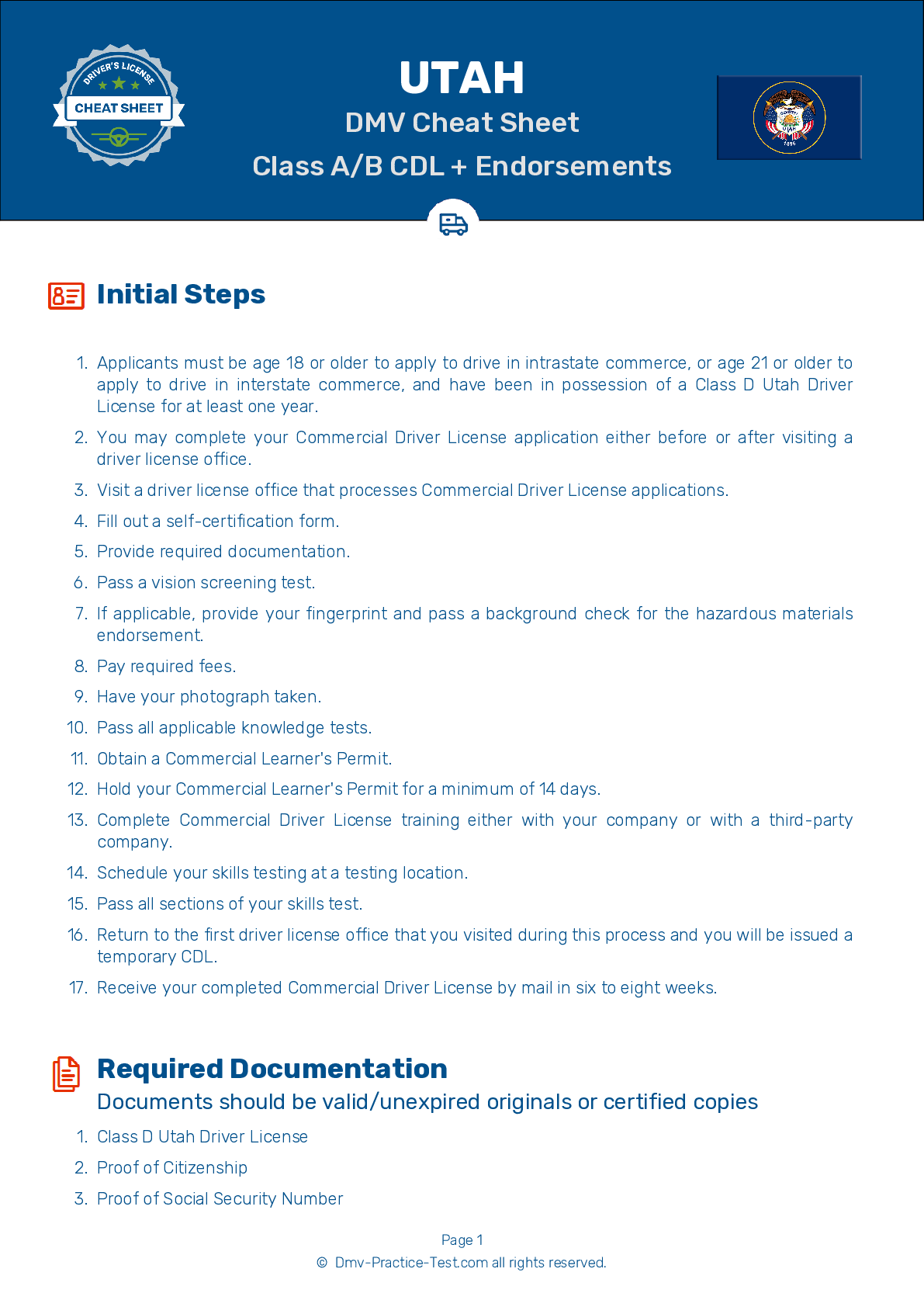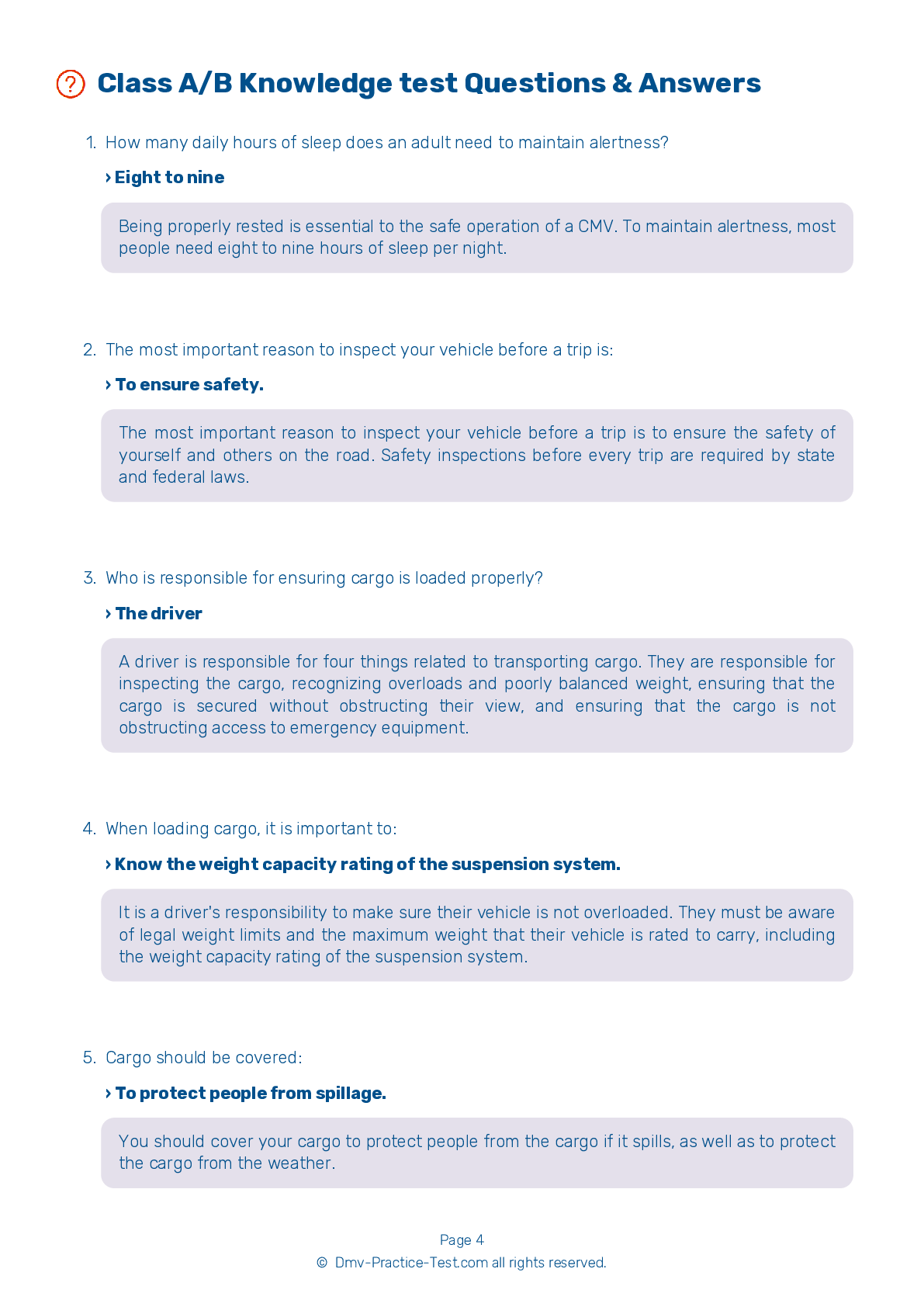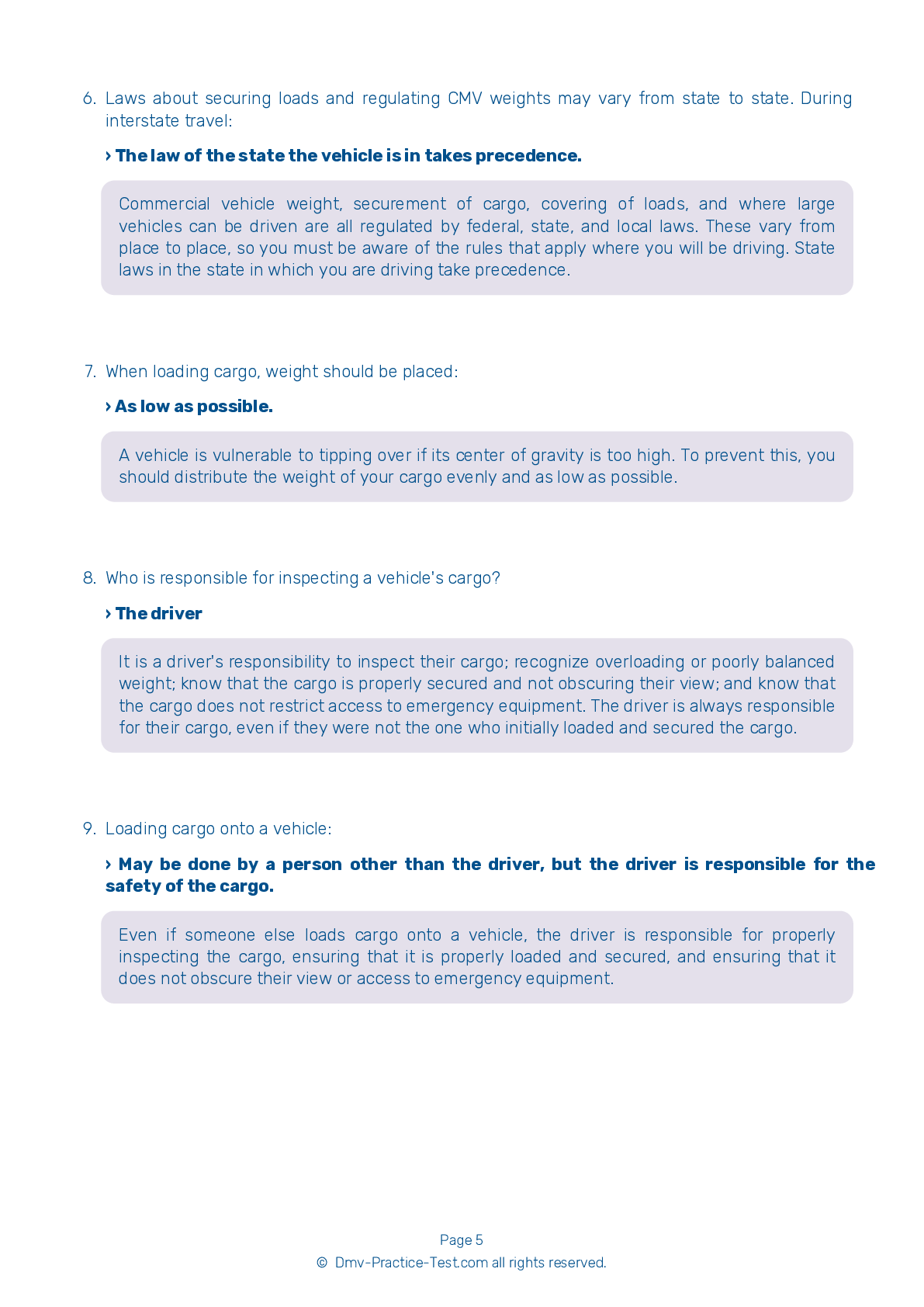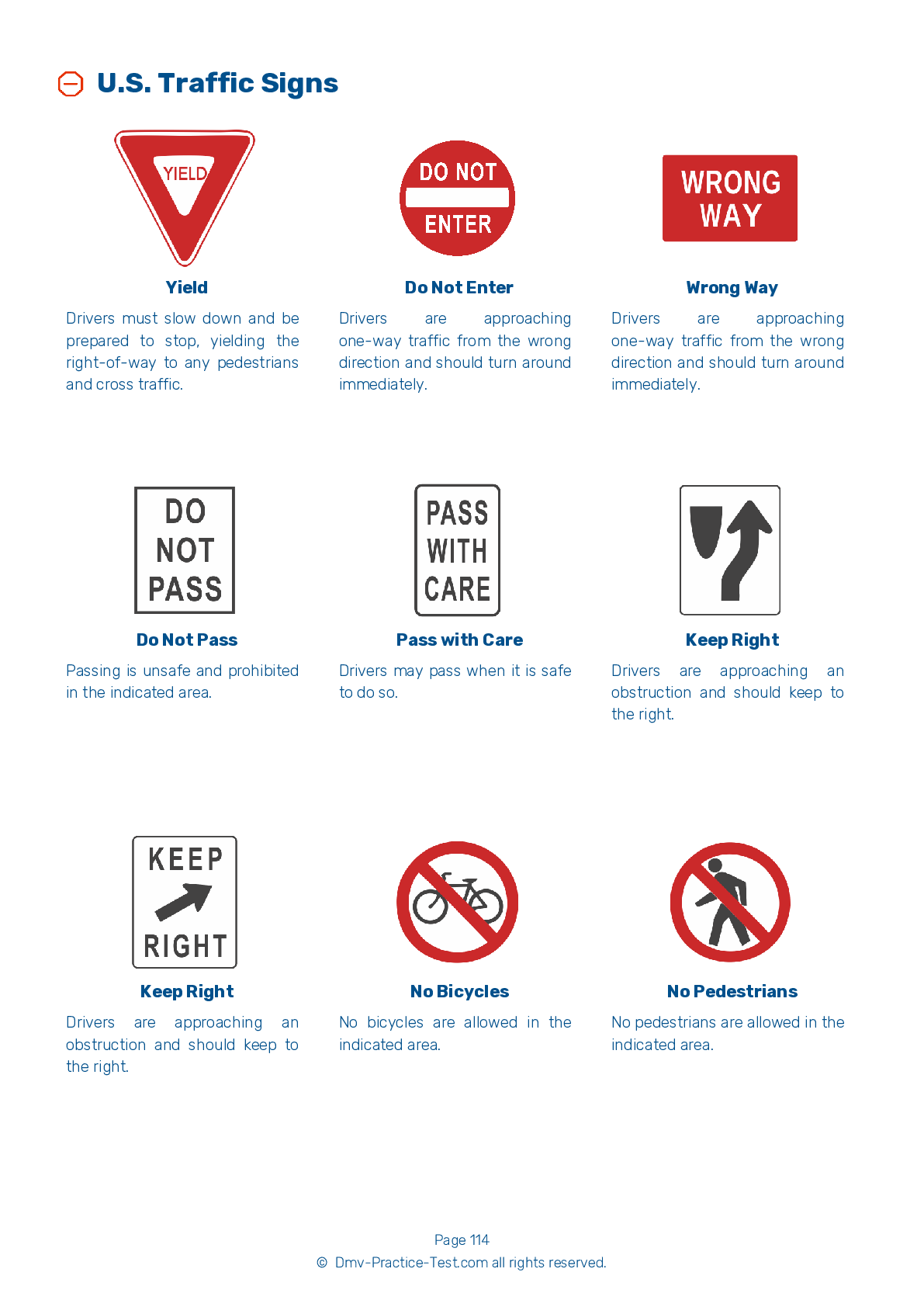Class B Driving Test | Utah 2025 #1 Page 3 of 7
Train for FREE online with our Utah class B license test. The official exam test consists of several obligatory parts, with all of them checking your knowledge of different blocks of road rules. If you need to obtain a UT CDL class B permit in 2025, practice as much as possible. Free sample tests published on our website will help you check and improve your knowledge and boost your grades. Please bear in mind that CDL class B requirements may vary from state to state.
15 . When checking tires, which of the following should not cause concern?
When checking the tires as part of a pre-trip inspection, make sure the tires have sufficient tread. There should be at least 4/32 of an inch of tread in every major groove of the front tires, and at least 2/32 of an inch of tread depth on the other tires. Tires should not be mismatched in size and radial and bias-ply tires should not be used together.
16 . When stopping a manual transmission vehicle, what should you do when the engine is close to idle?
When stopping a vehicle with a manual transmission, you should push in the clutch when the engine is close to idle.
17 . After a vehicle is started, the engine oil pressure should come up to normal:
After a vehicle's engine is started, the engine's oil pressure should rise to its normal level within seconds. Do not drive a vehicle with oil pressure that is too low.
18 . Tread depth in the major grooves on a front tire should be at least:
Tires need to have at least 4/32 of an inch of tread depth in every major groove on the front tires, and at least 2/32 of an inch of tread depth on other tires.
19 . A CMV should:
All commercial motor vehicles are required to be equipped with the proper emergency equipment. This may include spare electrical fuses; three red reflective triangles, six fuses, or three liquid burning flares; and at least one properly charged and rated fire extinguisher.
20 . What can happen if one-fourth of the leaves in a leaf spring are missing when a vehicle is inspected?
If at least one-fourth of the leaves in a leaf spring are missing, the vehicle will be put out-of-service until the defect is fixed.
21 . Hanging meat as cargo is usually:
A cargo of hanging meat can be very unstable, both because the meat swings about in transit and because its center of gravity is high.
See the exact questions that will be on the 2025 Utah DMV exam.
99.2% of people who use the cheat sheet pass the FIRST TIME
Lillian MCcranie explains how our CDL study guide was helpful in passing the exam and recommends it to everyone.
Cameron tells us how he purchased the CDL exam, and found it to be a useful tool which helped him pass the exam and find a job.



